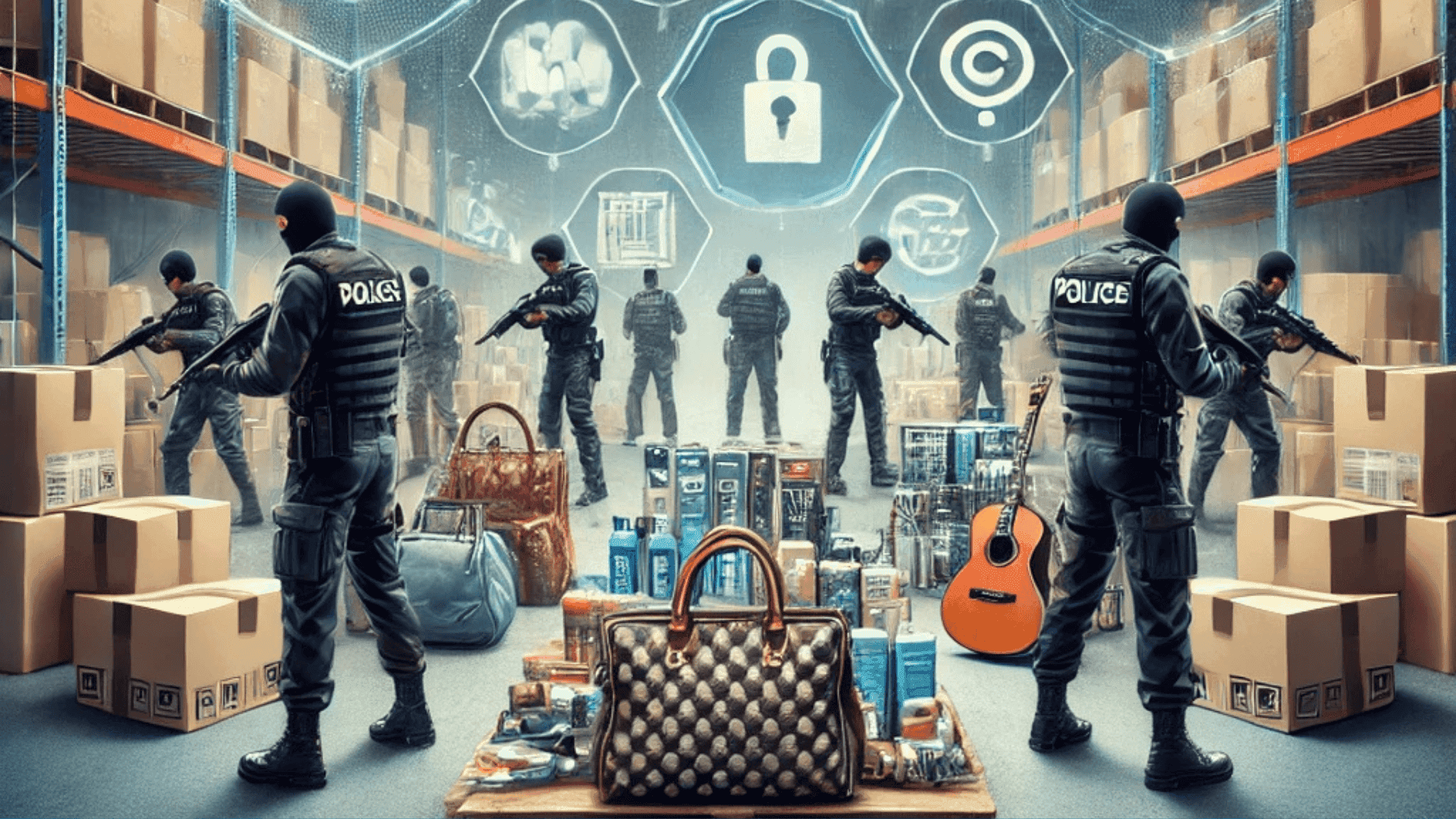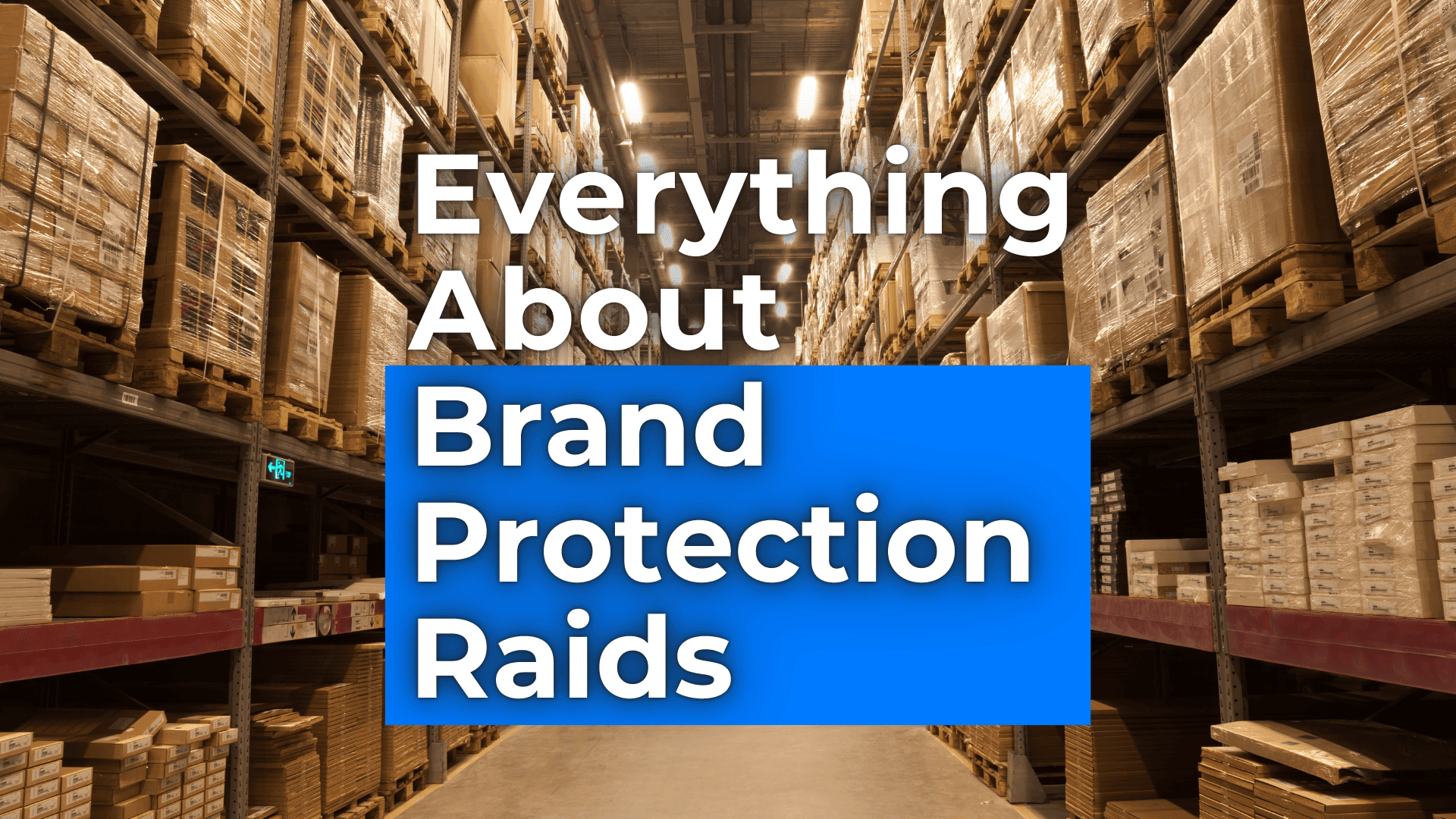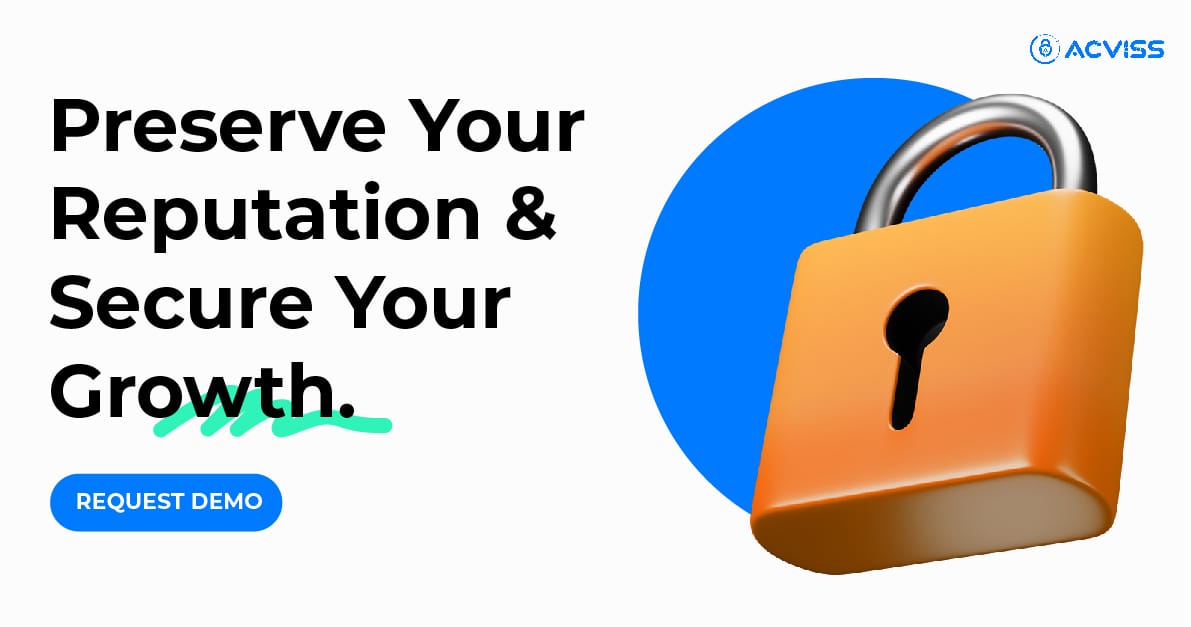Everything About Brand Protection Raids: A Comprehensive Guide
Counterfeiting is a global problem that undermines brand integrity, consumer trust, and economic stability. Brand protection raids serve as a powerful weapon in combating this issue, targeting counterfeit production and distribution networks. These strategic operations not only safeguard intellectual property but also protect consumers from the dangers of substandard fake consumer goods. As the counterfeit market grows increasingly sophisticated, the role of brand protection raids has evolved to address the complexities of global supply chains, e-commerce platforms, and social media marketplaces. This guide delves into the multifaceted world of brand protection raids, exploring their significance, execution, and the technological advancements shaping their future.
What Are Brand Protection Raids and Why Are They Crucial?
Brand protection raids are specialized operations aimed at combating the growing threat of counterfeiting. These raids target the production, distribution, and sale of fake goods, dismantling the networks that support them. Counterfeiting is not just an economic issue; it is a global menace that affects consumer safety, brand reputation, and even national security. By implementing raids, brands, governments, and enforcement agencies collaborate to strike at the heart of this illicit industry.
The need for such operations arises from the vast scale and impact of counterfeiting. According to global estimates, the counterfeit industry generates trillions of dollars annually, cutting across sectors like luxury goods, pharmaceuticals, electronics, and agrochemicals. Counterfeiting does not only erode the revenues of genuine businesses but also endangers lives—think of counterfeit medicines or substandard automotive parts. Brand protection raids serve as a critical intervention to mitigate these risks.
Top Anti-Counterfeiting Raids Led by Leading Brands in 2023-2024

Key Reasons Why Brand Protection Raids Are Crucial:
Safeguarding Consumer Safety:
Counterfeit products, especially in industries like pharmaceuticals, food, and electronics, pose significant health and safety risks. Raids help in removing these dangerous items from the market, protecting unsuspecting consumers.Preserving Brand Integrity:
Brands invest heavily in building trust and credibility. Counterfeit products undermine this trust by offering subpar imitations that tarnish the reputation of the original brand. Raids act as a defensive shield, preserving the hard-earned goodwill of a brand.Financial Implications:
Counterfeiting results in substantial revenue losses for businesses. Raids disrupt the counterfeit supply chain, reducing the financial drain on affected brands.Legal Enforcement and Deterrence:
Raids reinforce the importance of intellectual property rights. They send a clear message to counterfeiters that brands are proactive in protecting their assets. Publicizing successful raids also serves as a deterrent, discouraging potential offenders from engaging in such activities.Addressing Organized Crime:
Counterfeiting is often linked to organized crime networks, including those involved in human trafficking, terrorism, and other illicit activities. Brand protection raids not only target counterfeit goods but also disrupt these larger criminal enterprises.Enhancing Supply Chain Transparency:
Raids often reveal vulnerabilities in a brand’s supply chain. Identifying these weak points enables brands to implement stricter controls, ensuring the authenticity of their products.Boosting Consumer Confidence:
When consumers see a brand actively fighting counterfeiting, it enhances their trust in the brand. This proactive approach reassures customers that the products they purchase are genuine and safe.
By executing well-planned and coordinated raids, brands not only recover lost revenue but also take a definitive stand against the shadowy underworld of counterfeiting. These operations are indispensable in the modern marketplace, where digital platforms and global trade have amplified the counterfeit challenge. Through effective raids, brands uphold their commitment to quality, safety, and consumer trust.
The Role of Raids in Combating Counterfeit Products
Raids play a pivotal role in combating counterfeit products by targeting the root causes and enabling systemic change. Here’s a closer look at their multifaceted impact:
Immediate Reduction of Counterfeit Goods:
Raids result in the confiscation of fake goods, reducing their availability in the market.
For instance, a raid on a counterfeit electronics hub in Southeast Asia resulted in the seizure of $20 million worth of fake goods.
Breaking Supply Chains:
Raids disrupt the distribution networks that counterfeiters rely on.
By identifying and dismantling these networks, brands can prevent the proliferation of fake products.
Deterrence:
Publicizing successful raids sends a strong message to counterfeiters, discouraging them from continuing their illegal activities.
Example: Luxury brands like Louis Vuitton have leveraged high-profile raids to in still fear among counterfeit networks.
Protecting Consumer Safety:
Fake goods, especially in pharmaceuticals and food industries, pose severe health risks.
Raids help ensure that harmful products are removed from circulation before they reach unsuspecting consumers.
Rebuilding Trust:
Counterfeit goods erode customer confidence in brands. Raids showcase a proactive approach to safeguarding brand integrity.
This proactive measure reassures customers that the brand values quality and authenticity.
Unveiling Counterfeit Networks:
Raids often uncover key players and operational hubs in counterfeit networks.
This intelligence is invaluable for planning future operations and strengthening overall anti-counterfeit strategies.
Legal Precedence and Awareness:
Successful raids provide legal precedence for future cases, making it easier to prosecute counterfeiters.
They also raise public awareness about the prevalence and dangers of counterfeit goods.
Supporting Law Enforcement Collaboration:
Raids foster better collaboration between brands and law enforcement agencies.
Joint efforts enhance the efficiency and effectiveness of anti-counterfeiting measures.
Listicles Highlighting Impact:
Top Outcomes of Raids:
Seizure of fake goods and equipment.
Closure of illegal manufacturing units.
Identification of counterfeit supply chains.
Strengthened brand protection strategies.
Key Benefits to Consumers:
Safer products in the market.
Increased confidence in brand authenticity.
Awareness of counterfeit risks.
Raids are an essential tool in combating counterfeiting, ensuring both immediate and long-term benefits for brands and consumers alike. By targeting the root of the problem and leveraging the latest technology, brands can create a safer, more trustworthy market environment.
How to Plan and Execute a Successful Anti-Counterfeiting Raid
Preparation:
Conduct detailed market surveillance to identify counterfeit hotspots.
Gather intelligence through mystery shopping, online monitoring, or third-party investigators.
Coordinate with legal teams to ensure compliance with local laws.
Coordination:
Collaborate with local law enforcement, legal experts, and private investigators.
Ensure that all necessary permissions and warrants are in place.
Execution:
Plan a swift operation to minimize the risk of counterfeiters escaping or destroying evidence.
Secure all fake goods, packaging materials, and production equipment as evidence.
Post-Raid Actions:
Analyse findings to strengthen internal protocols.
Publicize the raid to educate consumers and deter counterfeiters.
Strengthen partnerships with law enforcement for future operations.
Raids in various Industries
1. Luxury Goods Market
Counterfeit luxury goods harm brand exclusivity and customer trust. Brands like Louis Vuitton and Gucci have conducted high-profile raids to protect their reputation. These operations often focus on seizing fake handbags, apparel, and accessories from unauthorized sellers and production units.
Counterfeit Busts that Rocked the Luxury Industry Around the World
2. Pharmaceutical Companies
Counterfeit medicines pose severe health risks. For example, fake vaccines, n95 masks during the COVID-19 pandemic jeopardized public health efforts. Raids in this sector focus on tracking unauthorized production facilities and dismantling black-market distribution networks.
3. Agrochemical Manufacturers
Fake pesticides and fertilizers can devastate crops and harm farmers’ livelihoods. Raids help prevent environmental damage and ensure the safety of agricultural produce by targeting counterfeit agrochemical suppliers.
Technology in Anti-Counterfeit Raids
1. How Technology is Enhancing Raids
AI and Machine Learning: These technologies analyse large datasets to identify counterfeit trends and pinpoint hotspots.
Blockchain: Ensures traceability across the supply chain, making it easier to detect and isolate breaches.
Data Analytics: Real-time analytics provide actionable insights for planning targeted raids.
2. Leveraging Data Analytics for Targeted Raids
E-commerce Monitoring: Track counterfeit listings and sellers across platforms like Amazon, Flipkart, Meesho and Alibaba.
Social Media Scrutiny: Detect fake profiles and counterfeit promotions on platforms like Instagram and Facebook.
Predictive Analytics: Identify regions and products most vulnerable to counterfeiting based on historical data.
Global Perspectives
1. Anti-Counterfeiting Laws Around the World
China: Stricter enforcement of intellectual property laws has led to an increase in raids.
USA: The Department of Homeland Security actively collaborates with brands for large-scale operations.
EU: Coordinated efforts among member states focus on cross-border counterfeit trade.
2. Counterfeiting Hotspots and Their Challenges
Southeast Asia: Known for counterfeit electronics and luxury goods.
Africa: A hub for fake pharmaceuticals and agrochemicals.
Middle East: Counterfeit oil and gas products are prevalent.
3. Cross-Border Coordination
Collaboration between customs authorities, INTERPOL, and WIPO enhances the effectiveness of raids targeting international counterfeit networks.
Steps and Best Practices while executing a Brand Protection Raids
1. Conducting Brand Protection Raids
Assemble a multidisciplinary team comprising legal, enforcement, and technical experts.
Use undercover operations to gather actionable intelligence.
2. Legal Considerations
Ensure compliance with local intellectual property laws to avoid legal setbacks.
Secure all necessary warrants and permissions before execution.
3. Partnering with Law Enforcement
Provide specialized training to law enforcement on counterfeit identification.
Establish long-term collaborations with government agencies to streamline future raids.
Challenges and Solutions
1. Overcoming Raid Challenges
Counterfeiters adapt quickly, requiring continuous monitoring and updating of strategies.
Solution: Leverage automated surveillance systems and AI-driven monitoring tools.
2. Post-Raid Follow-Up
Strengthen supply chain protocols to prevent recurrence.
Educate consumers on recognizing counterfeit products.
3. Managing Negative Publicity
Transparent communication with stakeholders ensures raids are seen as protective rather than disruptive.
Real-World Success Stories
1. Saved Millions
A global electronics brand recovered $10 million worth of counterfeit products through coordinated raids in Southeast Asia.
2. High-Profile Raids
Fashion giants like Gucci and Prada have successfully leveraged AI-driven monitoring tools to execute international raids, preserving their brand integrity.
Future of Raids
1. AI and IoT in Raids
IoT-enabled devices provide real-time data on counterfeit activities.
Smart sensors track the movement of fake goods across borders.
2. Digital Tools for Pre-Raid Prep
Blockchain records streamline evidence collection and ensure legal compliance.
Digital maps help teams visualize high-risk areas.
3. Beyond Raids
Emphasis on sustainable solutions like consumer awareness and robust IP laws.
Building a multi-layered defence strategy that combines technology, legal enforcement, and consumer education.
Conclusion
Brand protection raids are indispensable in the fight against counterfeiting. However, they are just one piece of a broader anti-counterfeiting strategy. Combining advanced anti-counterfeiting technology, robust legal frameworks, and proactive consumer education can create a formidable defence against counterfeit threats. As brands scale operations, the importance of integrating automated, real-time brand protection solutions like those offered by Acviss becomes ever more critical.
Protect your brand—and your customers—with cutting-edge tools that ensure authenticity and trust in today’s complex marketplace.

